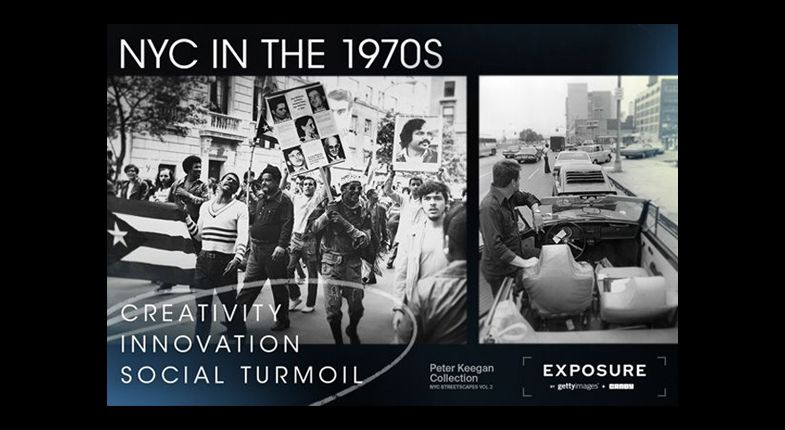The Cultural Zeitgeist of 1970s New York
In Celebration of the Music & Culture Vol. 2 - Diving deep into the Cultural Zeitgeist of 1970s New York.

New York City has always been a hotbed of artistic and political expression, where music, art, and activism collide in a beautiful, rancorous way. This was especially true during the 1970s, when the city experienced a cultural renaissance that further established NYC’s reputation as a global center of creativity and innovation.

A Symphony of Sounds
During the ‘70s, New York City saw the rise of countless music genres that move our bodies and souls to this day. The city was alive with the sound of rock and roll, disco, and funk pouring out of clubs and venues across Manhattan and the outer boroughs. In addition to home-grown musicians like The Ramones and Donna Summer, New York was also a popular destination for performers from all around the world, with Michael Jackson and Jackson Five’s live album "The Jacksons Live!" filmed at Madison Square Garden during their 1979 Destiny Tour, and The Police’s legendary concert at CBGB in 1978. There was always something new and exciting vibrating through the airwaves of New York City and spilling onto the streets. The energy was infectious, and the scene was electric.
Art as Revolution
Along with the music came a wave of creativity that swept across the art scene, with artists creating bold, new works that pushed boundaries and challenged traditional ideas about what art could be. From the abstract expressionism of Jackson Pollock to the pop art of Andy Warhol, the city was home to some of the most influential artists of the 20th century. The opening of iconic institutions such as the Museum of Modern Art's PS1 and the New York Public Theater provided platforms for artists to showcase their work, and in addition to this explosion of institutional art New York also saw the rise of street art and graffiti as legitimate art forms during the ‘70s.
Protest and Power
And then there was the political activism. The ‘70s was a time when people took to the streets to demand change, whether it was fighting for women’s rights and other civil liberties or protesting the Vietnam War. The Stonewall riots in 1969 marked the beginning of the modern gay rights movement, which went full swing through the ‘70s, and the 1971 Women's Strike for Equality drew thousands of women to Fifth Avenue to demand equal pay and reproductive rights. In short, the city was the center of many political movements that eventually swept the nation, and it was impossible to be in New York during the 1970s without feeling the power of the people's voices ringing out.
A Singular Time, In a Singular Place
The 1970s laid the foundation for the vibrant cultural scene that has come to define New York City in the decades since. This was all before digital imagery made photography ubiquitous and effortless, and photographs preserved from this era offer a rare glimpse into one of the most pivotal moments in culture and history. And while many of the city’s grandest moments were captured from multiple angles, it’s important to also cherish the subtler, ordinary moments where people simply went about their lives, thrived, or fought to survive in the Big Apple.
To that end, New York City’s myriad personalities and street scenes are immortalized in the works of legendary photographers like Peter Keegan, who covered some of New York City’s most iconic moments while also capturing many quieter, more intimate portraits of life in the city that would otherwise have been lost in time. Peter Keegan's images capture the essence of New York City’s vibrant culture and provide a window into a world that will never exist again, and every photograph is a historical artifact that testifies to the dynamism of this epic decade.

